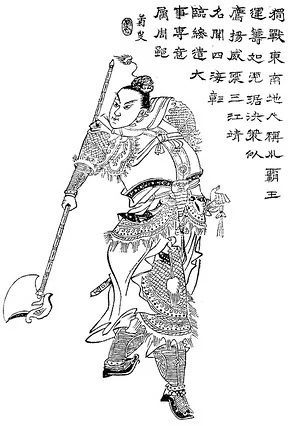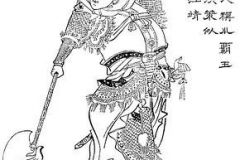Lifespan: (174-200), died at age 26. Age 15 when Dong Zhuo seized the Imperial government (189). Age 22 when Cao Cao seized the Imperial government (196). Age 26, but died around the time of the Battle of Guandu (200).
Birth/Death place: born in Fuchun (modern Fuyang, Zhejiang). Died of wounds from assassins in the Southlands.
Sun Ce 孫策 (175-200), courtesy name Sun Bofu 孫伯符, was a warlord at the end of the Later Han period (25-220) and older brother of Sun Quan 孫權, the eventual founder of the Wu dynasty 吳 (222-280), one of the Three Kingdoms 三國 (220-280).
Sun Ce came from Fuchun 富春 (modern Fuyang 富陽, Zhejiang) and experienced an instable life during his youth, caused by the steady campaigns of his father Sun Jian 孫堅. After Sun Jian’s death, Sun Ce joined the army of the warlord Yuan Shu 袁術 but his service was never appreciated. So he assembled his own army and took by force the province of Yangzhou 揚州 that was controlled by regional inspector (cishi 刺史) Liu Yao 劉繇 and Wang Lang 王朗, governor (taishou 太守) of the commandery of Guiji 會稽.
Sun Ce was the strongest warlord in China’s southeast from 195 until his death in 200. He was an excellent military leader and knew how to attract capable advisors. He was also able to gain the support of many leading figures of the local gentry—men like Zhou Yu 周瑜. In 197, Yuan Shu proclaimed himself emperor, and Sun Ce took part in the campaigns against his former superior. He was rewarded for his engagement with the title of General elucidating the Han (minghan jiangjuan 明漢將軍) and the post of governor of Guiji. A year later he was awarded the title of General fighting the rebels (taoni jiangjun 討逆將軍) and was given the title of Marquis of Wu 吳侯.
After the death of Yuan Shu, he undertook another campaign against the governor of Lujiang 廬江, Liu Xun 劉勛, and occupied the whole middle Yangtze River valley. In order to check the mighty warlord of the north, Yuan Shao 袁紹, he was approached by Cao Cao 曹操 who controlled the Imperial government to create an alliance. In preparation of a campaign against the north, Sun Ce was assassinated. He left a large, united, and economically prosperous territory in the south to his younger brother Sun Quan (Zhu 1992, vol. 2, p. 1060)(Fan c. 450)(Chen c. 280).
Sources:
Chen Shou, et al. (c. 280). Sanguozhi “Records of the Three Kingdoms”. Additions were added by Pei Songzhi (c. 400), named: Sanguozhi zhu “Annotations to Records of the Three Kingdoms”.
Fan Ye, et al (c. 450). Hou Hanshu “Book of the Later Han”, a.k.a. “History of the Later Han”.
Zhu Zongbin (1992). Zhongguo da baike quanshu, Zhongguo lishi. Beijing/Shanghai: Zhongguo da baike quanshu chubanshe. Chinaknowledge.de, March 8, 2011. Accessed Jan. 2020 – https://www.chinaknowledge.de/History/Division
ZT: Zantam03 (2011). Portraits of Characters from a Qing Dynasty edition of Romance of the Three Kingdoms, Zengxiang Quantu Sanguo Yanyi (1896). Gongjin’s Campaign Memorials (website). Accessed Jan 2020 – https://threekingdoms.wikia.org/wiki/Gongjin%27s_Campaign_Memorials. Community content is licensed under the Creative Commons Attribution-Share Alike License 3.0 (Unported) (CC-BY-SA).



